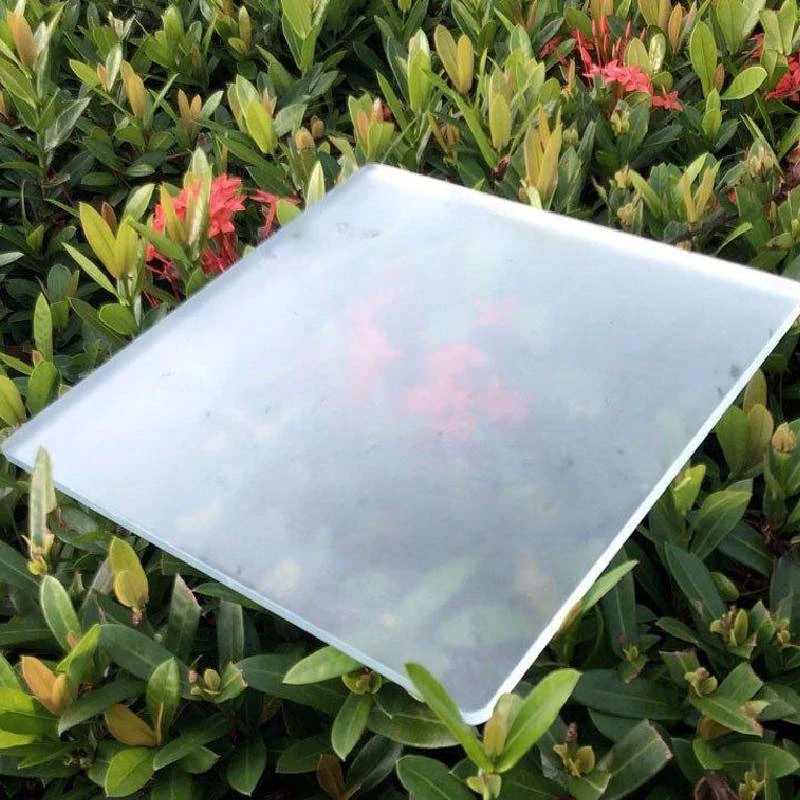The Price Dynamics of Raw Mirror Glass An Overview
In recent years, the market for raw mirror glass has garnered significant attention from various industries. This interest is not merely a reflection of aesthetic preferences but is rooted in the vital role that mirror glass plays in multiple applications ranging from architectural design to automotive manufacturing. The price of raw mirror glass is influenced by a myriad of factors, including material costs, production processes, and global market trends. Understanding these dynamics is crucial for businesses, manufacturers, and consumers alike.
Understanding Raw Mirror Glass
Raw mirror glass is essentially a flat glass product that has been coated with reflective materials, typically silver or aluminum. This transformation allows the glass to reflect light effectively, resulting in a mirrored surface. The production process generally involves several stages, including glass melting, forming, coating, and polishing, which collectively determine the final quality of the product.
Price Factors
1. Raw Materials The base materials for producing mirror glass—silica sand, soda ash, and lime—are inherently subject to market fluctuations. The costs involved in mining these materials, coupled with transportation and processing expenses, contribute significantly to the final price of raw mirror glass. Any disruption in supply chains, such as those caused by geopolitical tensions or natural disasters, can lead to sudden price hikes.
2. Production Costs The manufacturing process of mirror glass is energy-intensive, as it requires high temperatures for melting glass and applying coatings. Fluctuations in energy prices, especially in the context of increasing global demand for energy and the transition to sustainable sources, can heavily influence the production costs. Additionally, advancements in technology that aim to reduce energy consumption may temporarily elevate development costs, affecting overall pricing.
3. Market Demand The demand for mirror glass is driven by various sectors, including construction, automotive, and interior design. As urbanization accelerates globally, the construction industry witnesses robust growth, further fueling the demand for mirror glass in buildings and facades. Similarly, the automotive industry increasingly integrates reflective surfaces for safety and aesthetics, impacting the overall market dynamic. Seasonal trends, especially in the construction sector, can lead to fluctuations in demand, ultimately affecting the price.
raw mirror glass price
4. Global Trade Dynamics The raw mirror glass market is not confined to local borders. International trade agreements, tariffs, and import/export regulations can have profound impacts on pricing. For instance, countries with abundant resources may export raw mirror glass at lower prices compared to regions reliant on imports. Additionally, trade disputes can lead to increased costs, making domestic production more favorable.
5. Technological Innovations The emergence of advanced coating technologies has paved the way for products that offer enhanced durability, better reflection, and improved energy efficiency. While these innovations may increase the initial investment in production, they can ultimately lead to cost savings in the long run through improved product lifespan and performance. As a result, companies incorporating these technologies may reposition themselves in the market, influencing overall pricing strategies.
Future Outlook
As we look ahead, the price of raw mirror glass is expected to remain volatile, largely influenced by the same factors that currently dictate its value. However, sustainability is becoming an increasingly important consideration. Manufacturers are exploring eco-friendly alternatives and recycling methods to reduce their carbon footprint, which could lead to shifts in production processes and pricing structures.
Moreover, the growing trend toward smart technologies—such as intelligent mirrors that integrate digital displays—could reshape demand dynamics. As consumer preferences evolve, manufacturers may need to adapt their product offerings, potentially leading to new pricing models.
Conclusion
In summary, the price of raw mirror glass is a complex interplay of material costs, production processes, market demand, and global trade dynamics. Keeping abreast of these factors is essential for stakeholders in the industry, enabling them to make informed decisions in a continuously shifting marketplace. With sustainability and technology at the forefront of industry trends, the future of raw mirror glass pricing could very well reflect broader changes within the global economy.
 Afrikaans
Afrikaans  Albanian
Albanian  Amharic
Amharic  Arabic
Arabic  Armenian
Armenian  Azerbaijani
Azerbaijani  Basque
Basque  Belarusian
Belarusian  Bengali
Bengali  Bosnian
Bosnian  Bulgarian
Bulgarian  Catalan
Catalan  Cebuano
Cebuano  Corsican
Corsican  Croatian
Croatian  Czech
Czech  Danish
Danish  Dutch
Dutch  English
English  Esperanto
Esperanto  Estonian
Estonian  Finnish
Finnish  French
French  Frisian
Frisian  Galician
Galician  Georgian
Georgian  German
German  Greek
Greek  Gujarati
Gujarati  Haitian Creole
Haitian Creole  hausa
hausa  hawaiian
hawaiian  Hebrew
Hebrew  Hindi
Hindi  Miao
Miao  Hungarian
Hungarian  Icelandic
Icelandic  igbo
igbo  Indonesian
Indonesian  irish
irish  Italian
Italian  Japanese
Japanese  Javanese
Javanese  Kannada
Kannada  kazakh
kazakh  Khmer
Khmer  Rwandese
Rwandese  Korean
Korean  Kurdish
Kurdish  Kyrgyz
Kyrgyz  Lao
Lao  Latin
Latin  Latvian
Latvian  Lithuanian
Lithuanian  Luxembourgish
Luxembourgish  Macedonian
Macedonian  Malgashi
Malgashi  Malay
Malay  Malayalam
Malayalam  Maltese
Maltese  Maori
Maori  Marathi
Marathi  Mongolian
Mongolian  Myanmar
Myanmar  Nepali
Nepali  Norwegian
Norwegian  Norwegian
Norwegian  Occitan
Occitan  Pashto
Pashto  Persian
Persian  Polish
Polish  Portuguese
Portuguese  Punjabi
Punjabi  Romanian
Romanian  Russian
Russian  Samoan
Samoan  Scottish Gaelic
Scottish Gaelic  Serbian
Serbian  Sesotho
Sesotho  Shona
Shona  Sindhi
Sindhi  Sinhala
Sinhala  Slovak
Slovak  Slovenian
Slovenian  Somali
Somali  Spanish
Spanish  Sundanese
Sundanese  Swahili
Swahili  Swedish
Swedish  Tagalog
Tagalog  Tajik
Tajik  Tamil
Tamil  Tatar
Tatar  Telugu
Telugu  Thai
Thai  Turkish
Turkish  Turkmen
Turkmen  Ukrainian
Ukrainian  Urdu
Urdu  Uighur
Uighur  Uzbek
Uzbek  Vietnamese
Vietnamese  Welsh
Welsh  Bantu
Bantu  Yiddish
Yiddish  Yoruba
Yoruba  Zulu
Zulu 

